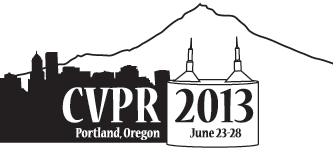-
Recognising Team Activities from Noisy Data
AbstractRecently, vision-based systems have been deployed in professional sports to track the ball and players to enhance analysis of matches. Due to their unobtrusive nature, vision-based approaches are preferred to wearable sensors (e.g. GPS or RFID sensors) as it does not require players or balls to be instrumented prior to matches. Unfortunately, in continuous team sports where players need to be tracked continuously over long-periods of time (e.g. 35 minutes in field-hockey or 45 minutes in soccer), current vision-based tracking approaches are not reliable enough to provide fully automatic solutions. As such, human intervention is required to fix-up missed or false detections. However, in instances where a human can not intervene due to the sheer amount of data being generated this data can not be used due to the missing/noisy data. In this paper, we investigate two representations based on raw player detections (and not tracking) which are immune to missed and false detections. Specifically, we show that both team occupancy maps and centroids can be used to detect team activities, while the occupancy maps can be used to retrieve specific team activities. An evaluation on over 8 hours of field hockey data captured at a recent international tournament demonstrates the validity of the proposed approach.
Related Material
[pdf][bibtex]@InProceedings{Bialkowski_2013_CVPR_Workshops,
author = {Bialkowski, Alina and Lucey, Patrick and Carr, Peter and Denman, Simon and Matthews, Iain and Sridharan, Sridha},
title = {Recognising Team Activities from Noisy Data},
booktitle = {Proceedings of the IEEE Conference on Computer Vision and Pattern Recognition (CVPR) Workshops},
month = {June},
year = {2013}
}
These CVPR 2013 workshop papers are the Open Access versions, provided by the Computer Vision Foundation.
Except for the watermark, they are identical to the accepted versions; the final published version of the proceedings is available on IEEE Xplore.
Except for the watermark, they are identical to the accepted versions; the final published version of the proceedings is available on IEEE Xplore.
This material is presented to ensure timely dissemination of scholarly and technical work.
Copyright and all rights therein are retained by authors or by other copyright holders.
All persons copying this information are expected to adhere to the terms and constraints invoked by each author's copyright.

